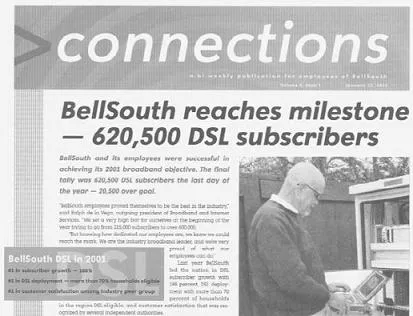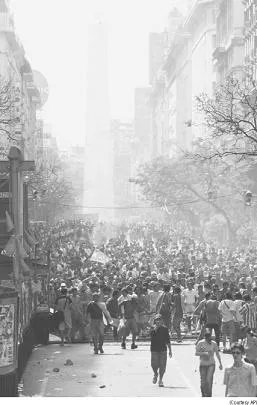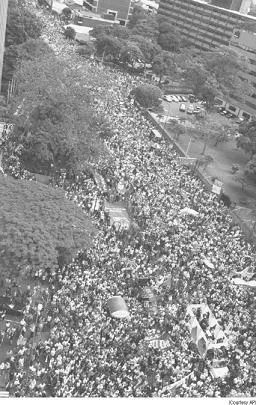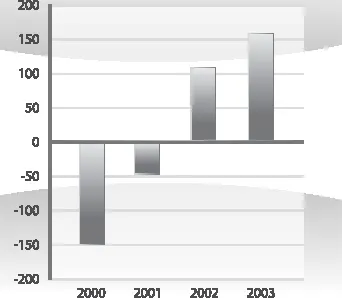![]()
THREE
Opportunities
in Disguise
It was January 2000, and the Internet revolution was in full bloom. I was to lead the development of a new line of business for BellSouth: Internet and Broadband Services (see Chapter 2, my Pivotal Point 4). Some of my colleagues warned that because of the extremely ambitious goals of this initiative, it could potentially derail my career. I knew that immense challenges lay ahead—the very kind of obstacles that I had learned to welcome as opportunities in disguise.
During the 1990s several inventions and developments fueled explosive growth of the Internet. The creation of the World Wide Web and the development of Web browsers such as Netscape Navigator and Internet Explorer made the Internet user-friendly. At the same time, advances in telecommunications access technologies provided faster and faster connections to the Internet.
The Internet, combined with the telecom developments, was making lasting changes to the ways we live and work. This created unprecedented business opportunities. BellSouth put me in charge of capitalizing on them throughout its nine-state region.
At the end of 1999, just before I took the position, BellSouth had just 30,000 broadband access lines in service. My team was charged with increasing the number of broadband subscribers to 200,000 by the end of 2000 and to 600,000 by the end of 2001. This was dramatic growth by any standards, and it was far faster than the industry as a whole was expected to expand. To hit that goal, we needed to tap into the surging market by generating new users and taking customers away from competitors.
This required that we solve several problems simultaneously: (1) find a way to cost-effectively deploy the new technology so it would work with our existing architecture; (2) educate customers on the benefits of broadband; (3) define a way to target the right customers; and (4) build and maintain the new broadband network.
Although there were countless problems to be solved, our team didn’t dwell on them as difficulties. We focused on the possibilities, and together we found ways to overcome all the obstacles.
First, we figured out how to make new and old technologies work together. This immediately turned our existing infrastructure into an enabler for broadband rather than a roadblock, as some had predicted.
Then our marketing team rolled out truly great advertising to educate customers on the benefits of digital subscriber lines (DSL), demonstrating how they provide much faster Web access without tying up your phone line, and they were always on, with no cumbersome dial-up routine.
This combination of focused, market-driven deployment with our advertising strategy led customers to sign up in record numbers. We hit our goal of having 600,000 subscribers by the end of 2001. This made us number one in growth, number one in coverage, and number one in customer satisfaction compared with our peers in the industry.
At the end of 1999, BellSouth had approximately 30,000 broadband access lines in service. My team was charged with increasing the number of broadband subscribers to 200,000 by the end of 2000 and to 600,000 by the end of 2001. The headline above from the BellSouth Connections publication on January 2002 says it all. Mission accomplished!
The lessons of this assignment were multiple: To succeed with such an ambitious program, you will need: a clear vision of the future, a solid plan, an energized team, and great execution. But most important of all, we found opportunity in the problems we faced. The result was success in the most difficult and rapidly changing of environments.
Seizing opportunities—making the most of them—is how you change your life for the better.
As you will understand by now, “opportunity” to me usually means a difficult situation that many people would think of as a problem and avoid if possible. Avoidance is a mistake.
Seeing Through the Disguise
When I was asked to take the BellSouth Latin America presidency, once again there were many colleagues who advised me against accepting the assignment because the region was mired in many troubles. In fact, some of my best friends thought I was crazy to consider it. As with the broadband position, I viewed the Latin America assignment as a great opportunity.
Instead of career killers, both of these jobs proved to be just the opposite. Were they challenging? Absolutely. But each situation gave me the chance to wrestle with circumstances I had never confronted and learn from them. As a result, in each case I was able to make a contribution that brought benefits to customers, increase the value of our company, and earn my spurs as a problem-solving leader.
With broadband I was accountable for leading a line of business (LOB). Not just any LOB but one that was deemed crucial to the future of the corporation. We were behind in Internet services, and we needed to catch up. I had do-or-die responsibility for leading my team to overcome significant technology and marketing challenges, and turn them into a breakthrough value proposition.
When I accepted the position of president of BellSouth Latin America in January 2002 (Pivotal Point 5), I became responsible for the wireless operations in eleven countries in Latin America (Argentina, Brazil, Chile, Colombia, Ecuador, Guatemala, Nicaragua, Panama, Peru, Venezuela, and Uruguay) which generated over $2 billion in revenues, employed fifteen thousand people, and served over eleven million customers.
I must admit, the opportunities of Latin America were very well disguised. Although the unit had grown rapidly, it wasn’t profitable. Our job was to bring it into the black. That would be challenging enough, but I was given the job just in time to experience one of the most severe economic depressions and some of the most volatile political situations ever in that region.
For example, a month before I began, violent demonstrations broke out in Argentina. Clashes with police resulted in several casualties. The situation eventually led to the resignation of President Fernando de la Rua. In the next few weeks the country had a string of different presidents in quick succession. In January 2002 Eduardo Duhalde was appointed president, and our fun really began!
The Argentine peso’s peg to the dollar was abandoned, and the exchange rate plunged to 4:1. Real gross domestic product fell over 10 percent. For us, this meant that overnight, revenues declined from approximately $1 billion to $250 million—pretty tough on a business plan!
Amid all this chaos, the Argentine government put enormous pressure on businesses not to raise prices to existing customers. Obviously this put us in a bind. We were being paid in pesos worth 25 percent of their value a few moments before. But we had to buy our handsets in dollars. If we couldn’t raise prices to cover the difference, this was a sure-fire recipe for bankruptcy. We had to find a way to conduct business so as to make a profit. The situation was challenging, to say the least.
Violent demonstration in Buenos Aires, December 2001.
We went to work.
Although we were restricted in raising prices to our base, that was not the case for new customers. So the first thing we did was to stop all promotions. We immediately increased prices for new customers who signed up. This basically brought new sales to a standstill—not a normal business goal, but better than losing money on every transaction.
With sales intentionally slowed, we had to figure out what to do with our sales force. We immediately had them turn to trying to collect past-due accounts to maximize income.
Meanwhile, a separate crisis was brewing in our largest market of the region, Venezuela. In February 2002, Venezuela let the Bolivar float freely, and the currency began to devalue at a rapid pace. Then, in April, Venezuela went through three presidents in a space of four days. Later in the year a two-month strike by businesses crippled the country. Imagine an environment where banks and shopping centers are closed, gasoline is almost nonexistent, mail is not delivered, and massive demonstrations of more than one million people, both for and against the government, become commonplace.
Thriving in such turbulence was no easy task. Although most businesses closed during the strike, our industry was vital and kept operating throughout the crisis. We had to improvise every day. A number of shopping centers where our stores were located started closing down, so we moved employees to call centers and freestanding stores. To get bills to customers, we used couriers for hand delivery!
Demonstration in Caracas, October 2002
The lack of gasoline proved a major challenge. Normally, we kept spare parts for our network infrastructure in a centralized warehouse and drove the parts to cell sites needing repairs. During the crisis we did not have enough gas to do this. So we moved the inventory to our technicians’ homes, and they would bicycle the parts to where they were needed. It was as if the clock had been turned back a hundred years in operational processes, but we still had to run a modern-day cellular telecommunications business.
The huge public demonstrations were an incredible challenge. Imagine a crowd of one million, many of them with cell phones, gathering at different locations of the city at different times of the day. It was a giant floating cloud of calling activity. Our operations people worked around the clock to keep the network running.
Argentina and Venezuela were not the only crises we had to deal with in 2002. In Brazil, we were faced with the default of a billion-dollar loan when the partnership, which we will discuss shortly, did not agree to make a $375 million payment. The loan was not recoursed to BellSouth, but we still had to deal with a very volatile situation. In Colombia and Ecuador, we faced the market entry of government-backed competitors who threatened our core business.
All of this was a great learning experience. Unlike my experience at Bellcore, which we’ll talk about later, this was not a situation that called immediately for a new vision. This was about bringing stability to existing operations, to give us a fighting chance for the future.
Once a degree of stability was attained, I brought our country general managers together for a planning and strategy session, a “summit meeting” of sorts. (I strongly believe in giving strategic planning responsibility to the people who will be accountable for executing the strategy.) This meeting got off to a rocky start as it became clear these GMs were used to being very independent. But we worked through it. By the end of the meeting, we had a collaborative vision, a set of strategies, and key initiatives for reaching the vision. It was hard work—but fully worth the effort. When the meeting ended, every GM literally signed the document that outlined our plan—and we went forward in unity. The net result from all this? Stellar, as shown in the chart below:
BellSouth Latin America Net Income ($M)
In Latin America, the messy batch of issues—from external politics to internal culture—seemed to doom the prospects for our business to grow in a healthy and profitable way. This opportunity turned out to be a classic example of shifting the focus away from the barriers to success, and focusing on the possibilities. When you get a group of people to zero in on what is possible instead of obsessing about what is not, they feel liberated. There is a surge of creativity, energy, and can-do spirit. (This is why market leaders should never disrespect up-and-comers.)
Ripple Effects
Seizing opportunities versus avoiding them—think of the difference this choice can make. It can cascade down through generations. For my parents and many other Cuban families, it would have been easy to avoid the danger and indignity of living as gusanos in a hostile atmosphere. They could have said, “It’s too hard to go through this just to take a wild chance on starting over in a strange countr...




